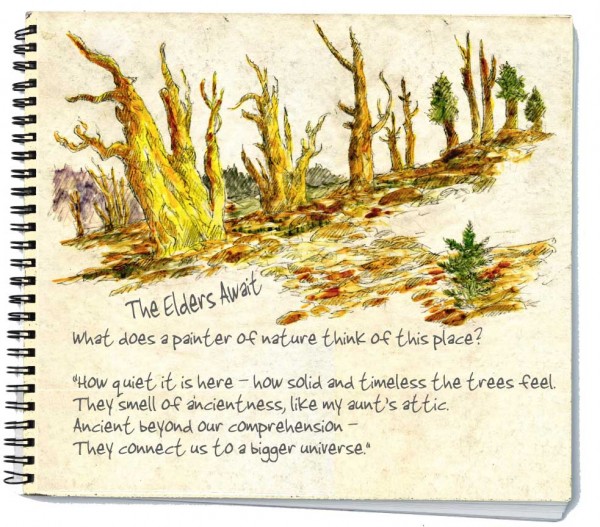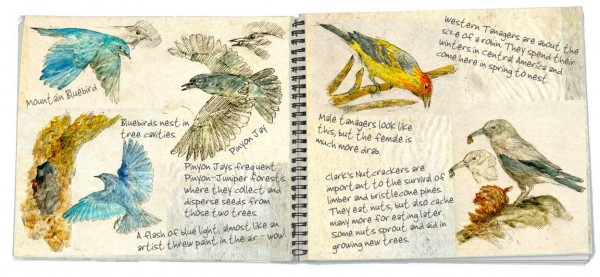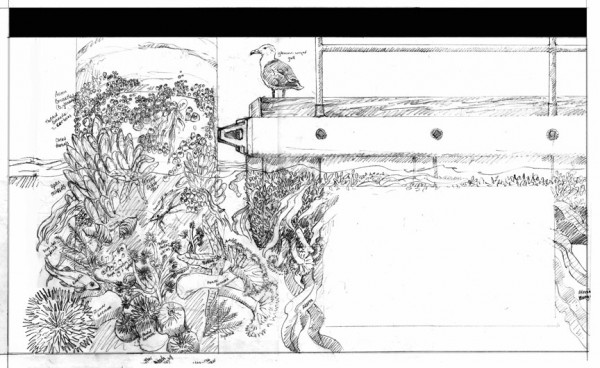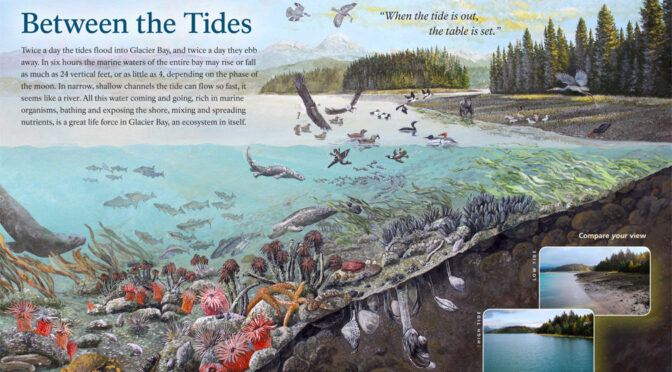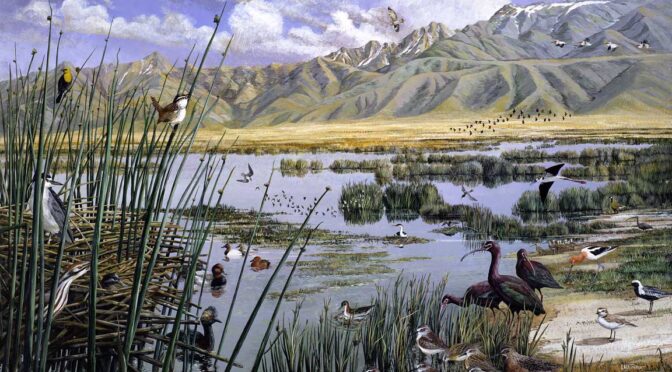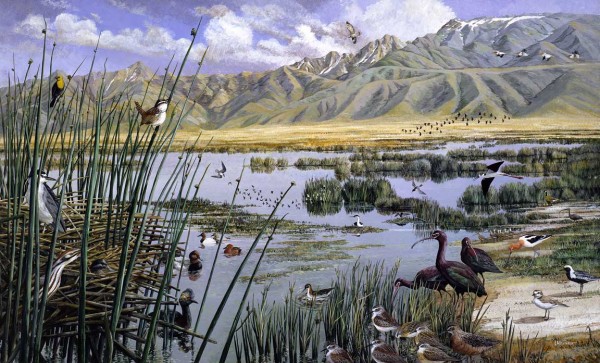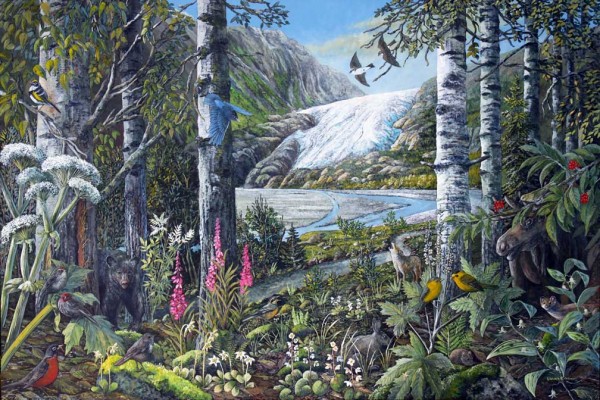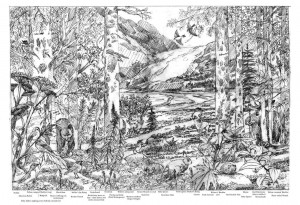This should enlarge with a click. Please do so as there are lots of details.
Just a mile or so from our studio is one of the rarest of all Northwest places – a lowland old-growth forest. It’s quite a park, and for Nancy and me, just walking the road into this place is often almost spiritual. Here in Port Townsend, we’re on the dry side of the Olympics so these trees aren’t huge like rainforest giants, but there’s an open and ancient feel here that always gets my heart going. Giant glacial boulders dot the forest. Signs of old wildfires are evident. We watch pileated woodpeckers hammer out old snags. Cougar warning signs abound. For about 8,000 years or since the last ice melted, this place has been left to itself. Even when there was a small military garrison here, the only trees cut were a few for firewood.
So, while thousands of miles of forests, our heritage, have been whacked away and the land irreputably ruined, this place has what few lowland forests have these days – some very, very rare plants. All those weird and odd plants that line the painting’s foreground are saprotrophic fungi, plants that don’t produce their own food but instead borrow it from the trees. You won’t see them in cut-over forests – if the forest goes, so goes most of the other stuff like gnome plant, sugar stick and pinedrops. Even calypso orchids won’t reappear. I won’t go into it more here, but I consider this forest to be something of a sacred place, a place much like a world-class museum that holds our most meaningful treasures – our heritage. These great forests won’t return ever again while humans are here, and so along with the few other scattered lowland patches of old-growth, this is IT!
Somehow the very active local friends group for the park, The Washington State Plant Society, came up with some funding for me to paint a mural for an exhibit at the park. Seriously, I can’t imagine anything more fun for me to do than paint this exceptional forest. I mean this is like a gift, a chance to actually paint my own backyard. It just doesn’t get any better than this. Here’s a picture by Nancy of the ol’ guy at the easel, half way through this effort. Was he dragging his feet? Well, maybe!
Thanks Ann and Nancy of the friends group, this was just plain fun.
And as usual, thanks for reading this week.
Larry Eifert
Click here to go to the online blog this was to.
Click here to go to our main website – packed with jigsaw puzzles, prints, interpretive portfolios and lots of other stuff.
Click here to check out what Nancy’s currently working on with her photography.
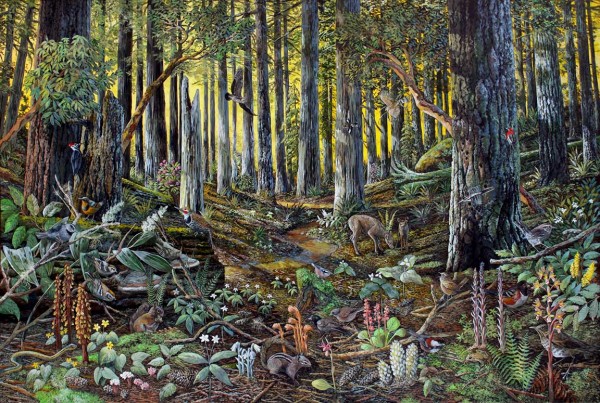
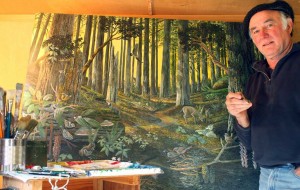
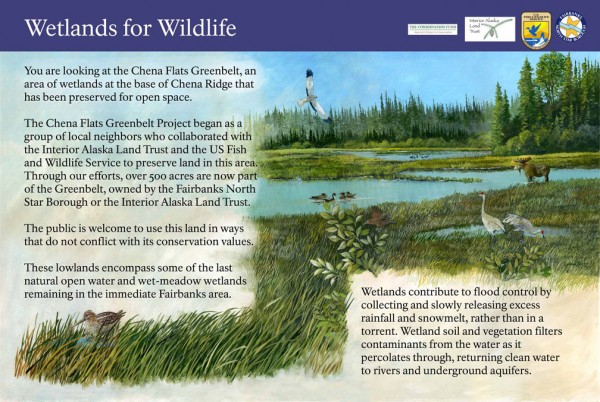
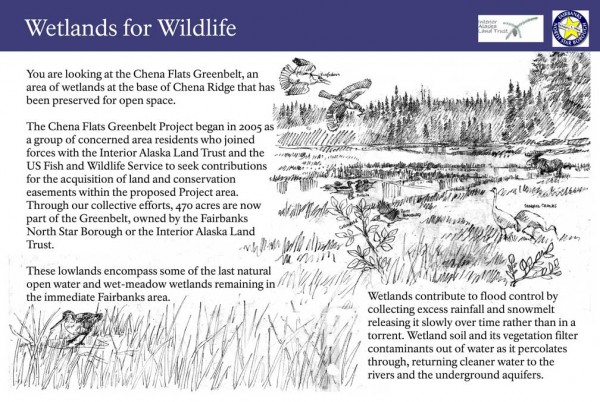
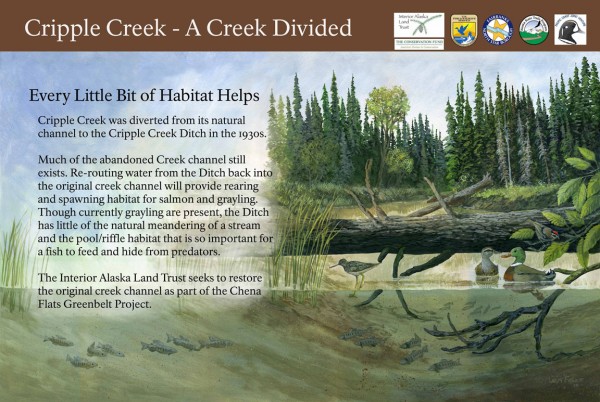
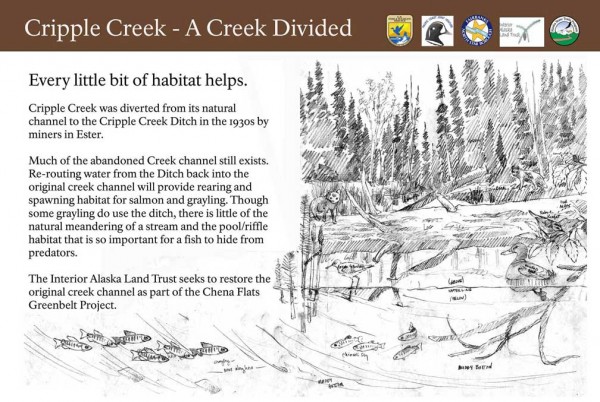

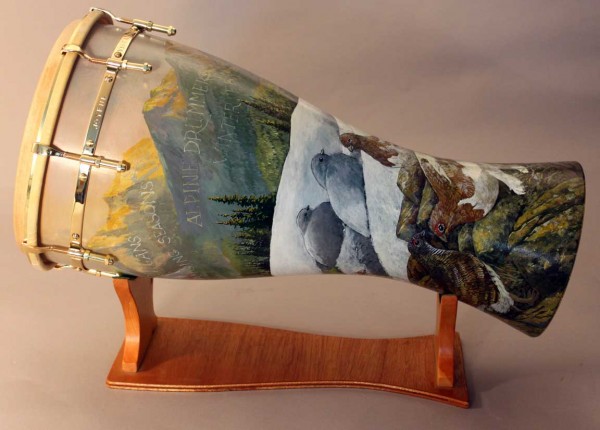 Can you teach two old dogs some new tricks? Maybe!
Can you teach two old dogs some new tricks? Maybe!